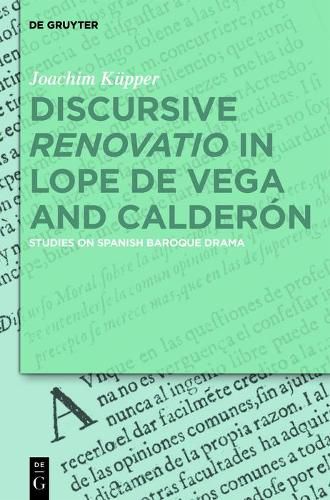Readings Newsletter
Become a Readings Member to make your shopping experience even easier.
Sign in or sign up for free!
You’re not far away from qualifying for FREE standard shipping within Australia
You’ve qualified for FREE standard shipping within Australia
The cart is loading…






This volume presents a new approach to Spanish Baroque drama, inspired by Foucauldian discourse archeology, whose rare fusion of meticulous philology and ambitious theory will be exciting and fruitful both for specialists of Spanish literature and for anyone invested in the history of European thought. Detailed readings are dedicated to some of the most prominent plays by Lope de Vega and Calderon de la Barca, both autos sacramentales (El viaje del alma; El divino Orfeo; La lepra de Constantino) and comedias (El castigo sin venganza; El principe constante; El medico de su honra). The archeological perspective cast on the plays implies an integration of their discourse-historical foils , from pagan antiquity through the Middle Ages and the Renaissance, as well as a discussion of related discourses, mainly theological, philosophical and historiographical. A separate excursus suggests a reconsideration of the common manner in which the discursive relation between the Middle Ages, the Renaissance, Mannerism and the Baroque is conceptualized.
$9.00 standard shipping within Australia
FREE standard shipping within Australia for orders over $100.00
Express & International shipping calculated at checkout
This volume presents a new approach to Spanish Baroque drama, inspired by Foucauldian discourse archeology, whose rare fusion of meticulous philology and ambitious theory will be exciting and fruitful both for specialists of Spanish literature and for anyone invested in the history of European thought. Detailed readings are dedicated to some of the most prominent plays by Lope de Vega and Calderon de la Barca, both autos sacramentales (El viaje del alma; El divino Orfeo; La lepra de Constantino) and comedias (El castigo sin venganza; El principe constante; El medico de su honra). The archeological perspective cast on the plays implies an integration of their discourse-historical foils , from pagan antiquity through the Middle Ages and the Renaissance, as well as a discussion of related discourses, mainly theological, philosophical and historiographical. A separate excursus suggests a reconsideration of the common manner in which the discursive relation between the Middle Ages, the Renaissance, Mannerism and the Baroque is conceptualized.